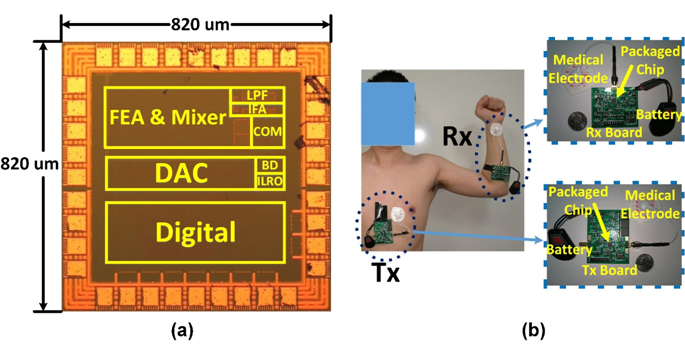Recently, the paper A Low-Power Compact IEEE802.15.6 CompatibleHuman Body Communication Transceiver withDigital Sigma-Delta IIR Mask Shaping designed by Zhao Bo, a teacher of the School of Information Science and Electronic Engineering (ISEE), was published by the IEEE Journal of Solid-State Circuits (JSSC) with Zhao Bo the first author of this article. The research cooperation partners include Zhejiang University, National University of Singapore, University of California, Berkeley, and York University, Canada. This is the third JSSC paper in the history of Zhejiang University. The first two papers are written by Prof. Han Yan and Prof. He LenianfromISEE. JSSC is the top journal in the field of integrated circuits design. Since its foundation in 1966, more than 12,300 articles have been published. Only around 50 papers from mainland China have been published in JSSC.
Unlike traditional wireless communication, human body channel communication adopts the human body surface as the medium for signal transmission, which can significantly reduce the energy consumption of communication and does not require an antenna. However, the transmission of communication signals through the surface of the human body can seriously disturb the monitoring of physiological signals (such as electrocardiograms and electroencephalograms) of the human body,for most human physiological signals are in the low-frequency range below 2MHz. A digital Sigma-DeltaIIR spectrum forming technology is proposed in the chip to suppress the spectrum below 2MHzof the transmitter, thereby avoiding interference with human physiological signals. Compared with the world's most advanced human body channel communication chip with low-frequency rejection, the chip is fully integrated for the first time, with an improvement of 6.2dB in low-frequency rejection ratio at 2MHz and a chip size reduction of less than 1/5.

Fig. 1 JSSC paper

Fig. 2 (a) picture of the chip (b) system demo
